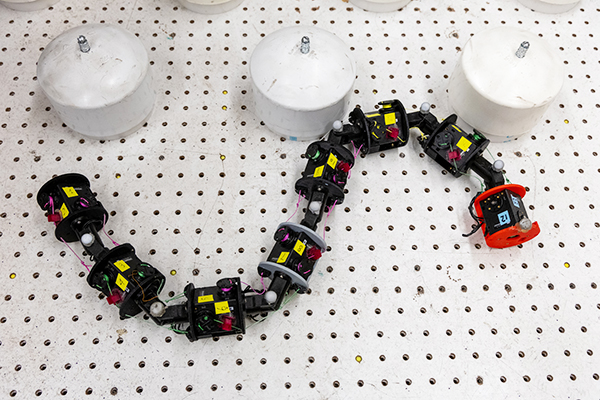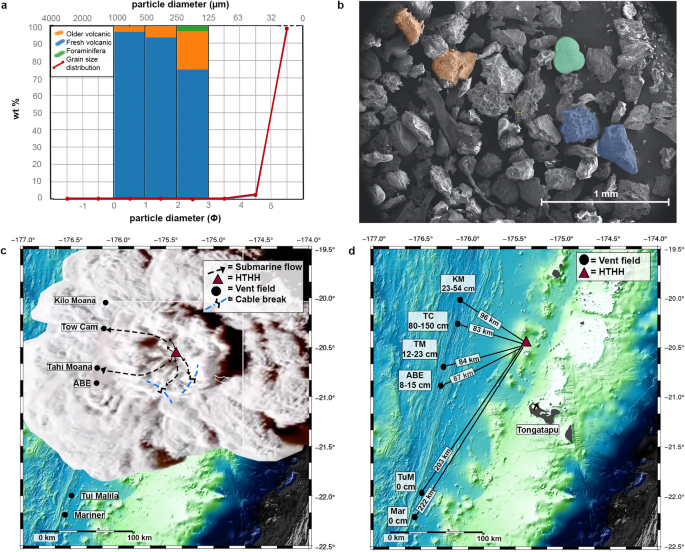2024-05-13 ジョージア工科大学

<関連情報>
- https://research.gatech.edu/feature/wiggly-robots
- https://www.science.org/doi/10.1126/scirobotics.adi2243
機械的知性により、四肢のない陸上運動における制御が簡素化される Mechanical intelligence simplifies control in terrestrial limbless locomotion
TIANYU WANG, CHRISTOPHER PIERCE, VELIN KOJOUHAROV, BAXI CHONG , […], AND DANIEL I. GOLDMAN
Science Robotics Published:20 Dec 2023
DOI:https://doi.org/10.1126/scirobotics.adi2243
Abstract
Limbless locomotors, from microscopic worms to macroscopic snakes, traverse complex, heterogeneous natural environments typically using undulatory body wave propagation. Theoretical and robophysical models typically emphasize body kinematics and active neural/electronic control. However, we contend that because such approaches often neglect the role of passive, mechanically controlled processes (those involving “mechanical intelligence”), they fail to reproduce the performance of even the simplest organisms. To uncover principles of how mechanical intelligence aids limbless locomotion in heterogeneous terradynamic regimes, here we conduct a comparative study of locomotion in a model of heterogeneous terrain (lattices of rigid posts). We used a model biological system, the highly studied nematode worm Caenorhabditis elegans, and a robophysical device whose bilateral actuator morphology models that of limbless organisms across scales. The robot’s kinematics quantitatively reproduced the performance of the nematodes with purely open-loop control; mechanical intelligence simplified control of obstacle navigation and exploitation by reducing the need for active sensing and feedback. An active behavior observed in C. elegans, undulatory wave reversal upon head collisions, robustified locomotion via exploitation of the systems’ mechanical intelligence. Our study provides insights into how neurally simple limbless organisms like nematodes can leverage mechanical intelligence via appropriately tuned bilateral actuation to locomote in complex environments. These principles likely apply to neurally more sophisticated organisms and also provide a design and control paradigm for limbless robots for applications like search and rescue and planetary exploration.



